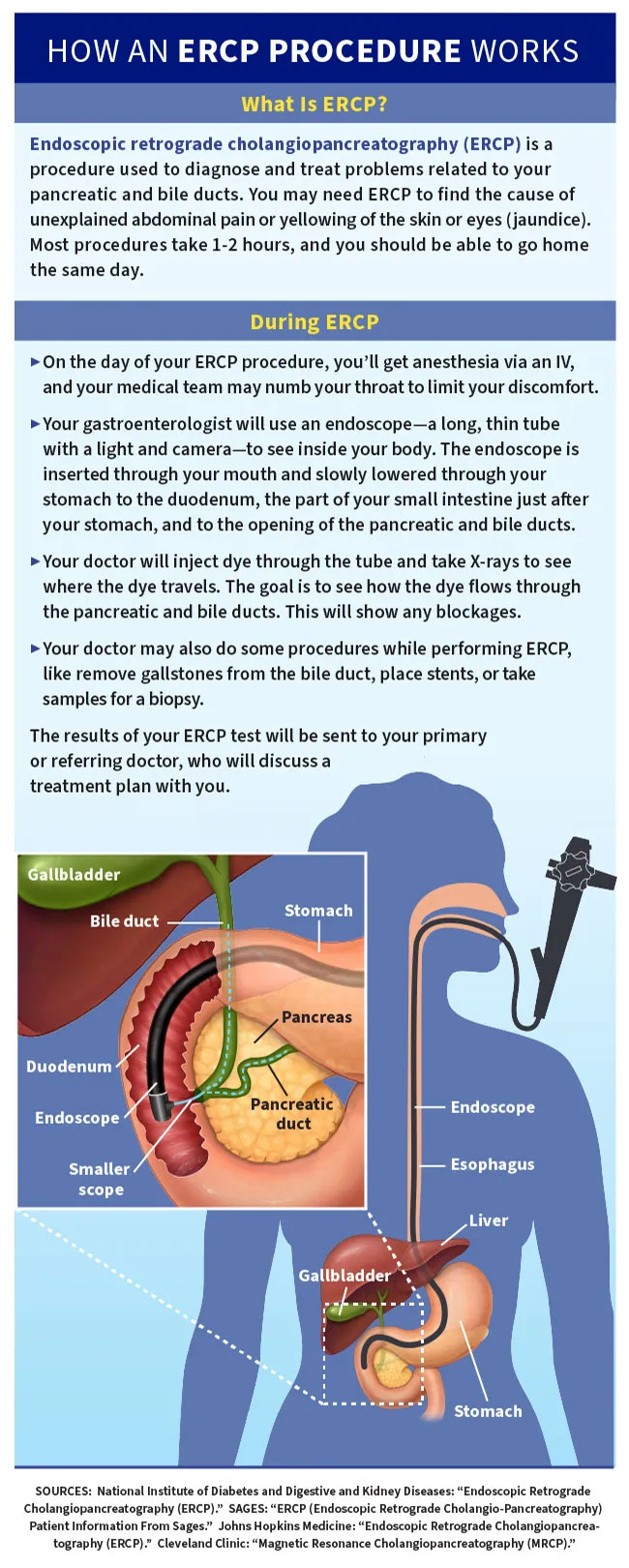What Is an ERCP?
2024-11-11 16:12:41ERCP, which is short for endoscopic retrograde cholangiopancreatography, is a procedure used to diagnose and treat problems related to pancreatic ducts and bile ducts.
The word “endoscopic” means it’s done with an endoscope -- a long, thin tube with a light and camera that allows doctors to see inside your body. The endoscope is inserted through your mouth and slowly lowered through your stomach to the duodenum. This is the part of your small intestine just after your stomach.
Once the tip of the endoscope is in place, the doctor injects dye through the tube and takes X-rays to see where the dye travels. The goal is to see how the dye flows through the pancreatic and bile ducts. This will show if there are any blockages and where they are. Your doctor may also be able to do some procedures, such as removing gallstones from the bile duct, while doing the ERCP.
ERCP Purpose
Your doctor may recommend an ERCP if you have signs of a problem with your bile or pancreatic ducts, like yellowing of the skin or eyes (jaundice) or unexplained abdominal pain. An ERCP can find issues including:
● Gallstones or other blockages, including tumors, in the bile ducts
● Blockages or narrowing in the pancreatic ducts
● Leaking from bile or pancreatic ducts
● Infections
ERCP Procedure
Most ERCP procedures take 1-2 hours, and you should be able to go home the same day. On the day of your ERCP, you’ll get anesthesia via an IV, and your medical team may numb your throat to limit your discomfort.
Your doctor will begin the procedure by placing the endoscope down your throat, reaching the top of your small intestine.
Doctors can do several treatments during an ERCP, which prevents the need for a separate surgery or procedure. They include:
ERCP gallstones removal
Once the endoscope is in place, the doctor can insert special tools through the scope to reach gallstones in the bile duct. Breaking up or removing the stones can be done in one of two ways. A mechanical lithotripsy uses a tool that captures the stone with a wire basket. The stones are crushed in the basket and then removed through the endoscope. The other procedure, intraductal electrohydraulic lithotripsy, uses a very thin probe inserted through the endoscope to reach the stone. A generator is connected to the probe and sends shock waves to break the stone. Once the stone is broken, it is removed with the wire basket.
ERCP biopsy
If your doctor suspects there may be a tumor or cancer cells, an ERCP makes it possible to take tissue samples from the ducts. Passing a small tool through the endoscope, the doctor collects tissue samples to send to a lab to be investigated.
ERCP dilation
Sometimes pancreatic and bile ducts become too narrow, blocking fluid from flowing through. In order to dilate, or widen, these, your doctor inserts a catheter (tube) with a balloon on the end through the endoscope. Once it reaches the narrowed area, the balloon is inflated to push the walls open. The balloon is then deflated and pulled back out through the endoscope.
ERCP stent placement
If a duct is narrowed and can’t stay open on its own, your doctor can insert a stent, a narrow tube, that stays in the narrowed section of the duct. This stent is inserted through the endoscope and acts as a wall support. It's usually removed after a few months. A stent might also be used if a duct is leaking.
ERCP sphincterotomy
Some people develop a narrowing of a part of their ducts called the sphincter of Oddi. A sphincterotomy opens or widens the area. Using a special tool inserted through the endoscope, your doctor makes a small cut into the muscle that surrounds the opening of the bile and pancreatic ducts to fix the issue.

Copyright © 2024 Changzhou Roga Medical Device Co.,Ltd. All Rights Reserved.
Powered by:ShuangXi

